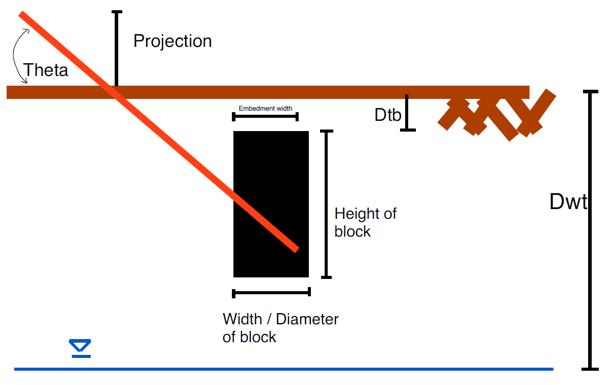Bodgy Engineer
Structural

I'm trying to design Deadman guy anchors, with significant uplift, and horizontal force.
A typical arrangement for a guyed dead anchor is to bury a concrete block at depth, then protrude an anchor rod to the ground line (this obviously causes a lot of ground disturbance, I'm not a fan).
Another typical use is to use a bored pier at depth (say 4m), then fill the bottom 2m with concrete and backfill the rest with the disturbed soil. Again an anchor rod is dug in and protrude up to the ground line.
Most examples (bowles etc.) are based on horizontally loaded Deadman anchors only. A few others say to split the problem into, 2 independent checks. An horizontal earth pressure assessment, and a vertical pile assessment for uplift.
This seems to work fairly well, accept for uplift cases in drained condition's. The capacities are very low, in theory, by this hand method. They have been used succefully in the past, at scale
![[neutral] [neutral] [neutral]](/data/assets/smilies/neutral.gif)
Is there any texts or literature that address this problem?
